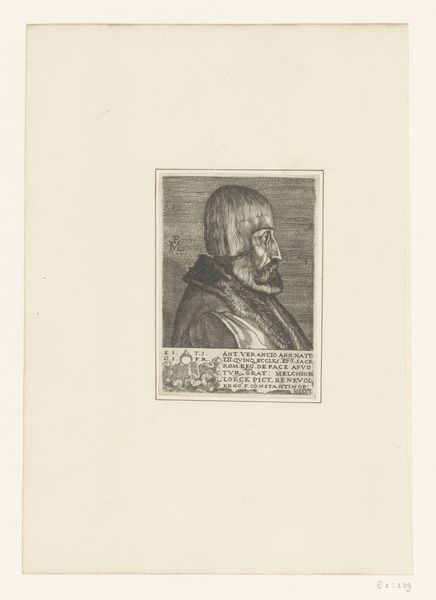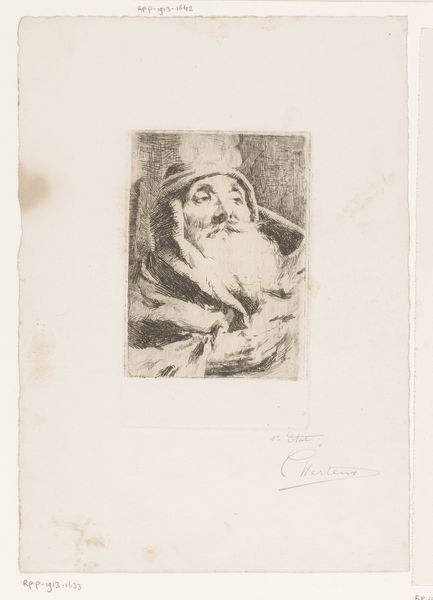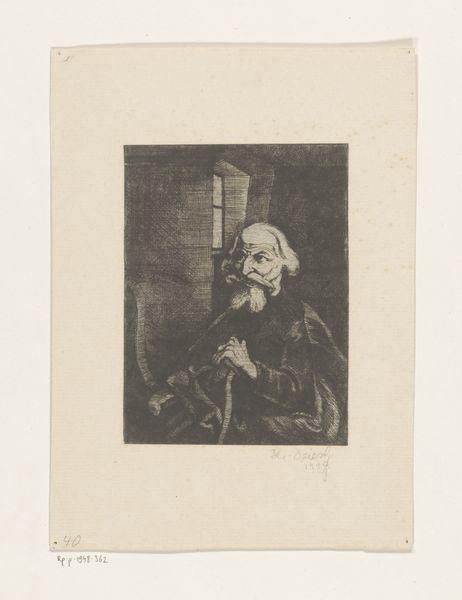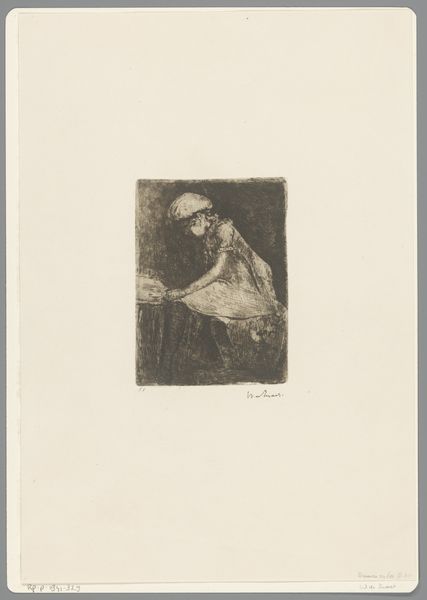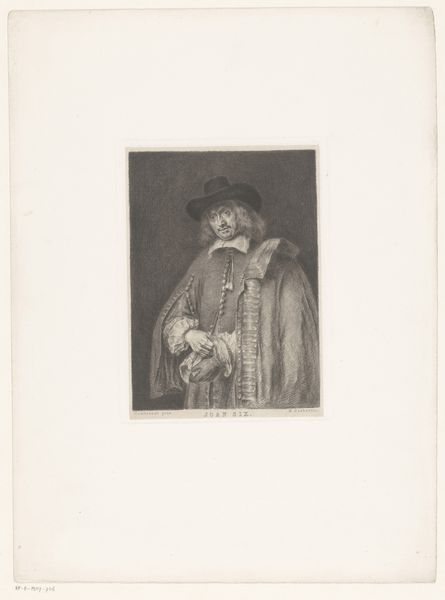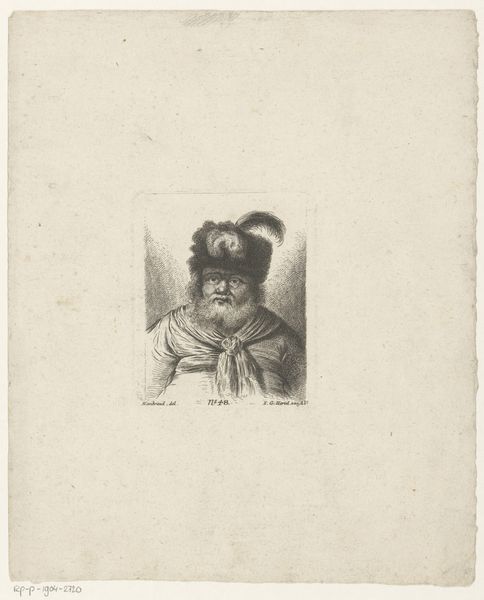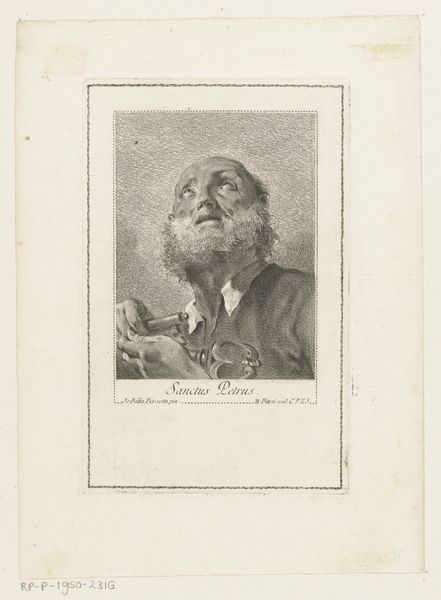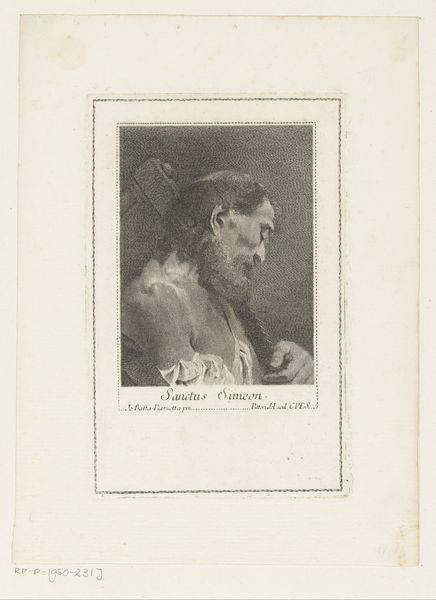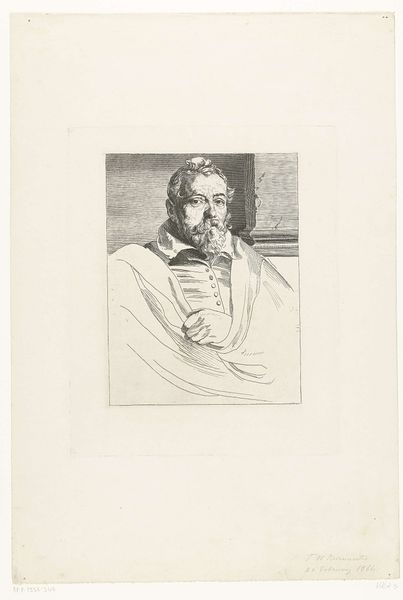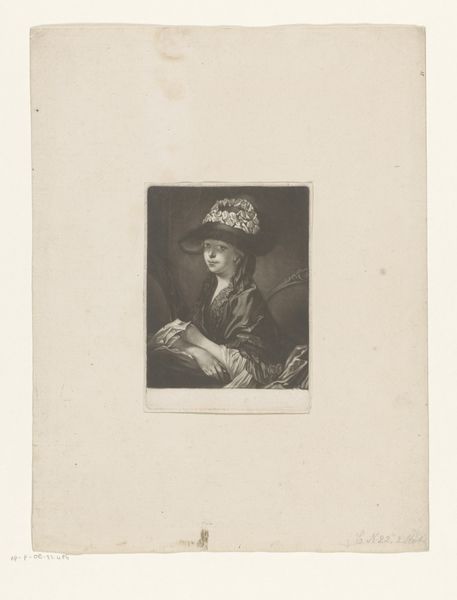
print, etching
#
portrait
# print
#
etching
#
academic-art
#
realism
Dimensions: height 148 mm, width 90 mm
Copyright: Rijks Museum: Open Domain
Editor: We are looking at "Farizee\u00ebr," an etching by Charles Mertens, dating from 1875 to 1913. It's a somber, tightly cropped portrait. What compositional elements stand out to you? Curator: Primarily, the artist's deployment of chiaroscuro is notable. The intense contrast between the deep blacks of the background and the highlights on the subject's face and hands compels our attention. Observe, too, the texture achieved through the etching technique; how it creates a visual tension, especially around the face. How do these formal choices impact your understanding? Editor: I see that. It seems to add a sense of depth and age to the figure. The lines etched around his face really highlight that. Does the texture also suggest meaning beyond just his physical age? Curator: Indeed. The very materiality of the etching--its linear structure, the incised mark making the image -- speak to the sitter's internal state, inviting a reading related to morality. How the work presents through these specific techniques evokes the austere character that the title leads us to expect. Editor: That makes sense. Considering his downcast gaze, that play of light and shadow is evocative of inner turmoil. So it's the combination of form and technique that really gives this image its power. Curator: Precisely. We decode the cultural expectations and our own understanding through how form shapes our emotional engagement with the content, here the very character and suggested state of the subject. Editor: This close analysis really changed how I viewed this work. Now I'm more attuned to the power of formal elements in conveying emotion and meaning. Curator: And I am pleased to perhaps inspire in you the potential within all art. Keep in mind, always, the interplay between medium and meaning; therein resides an artwork’s greatest power.
Comments
No comments
Be the first to comment and join the conversation on the ultimate creative platform.
